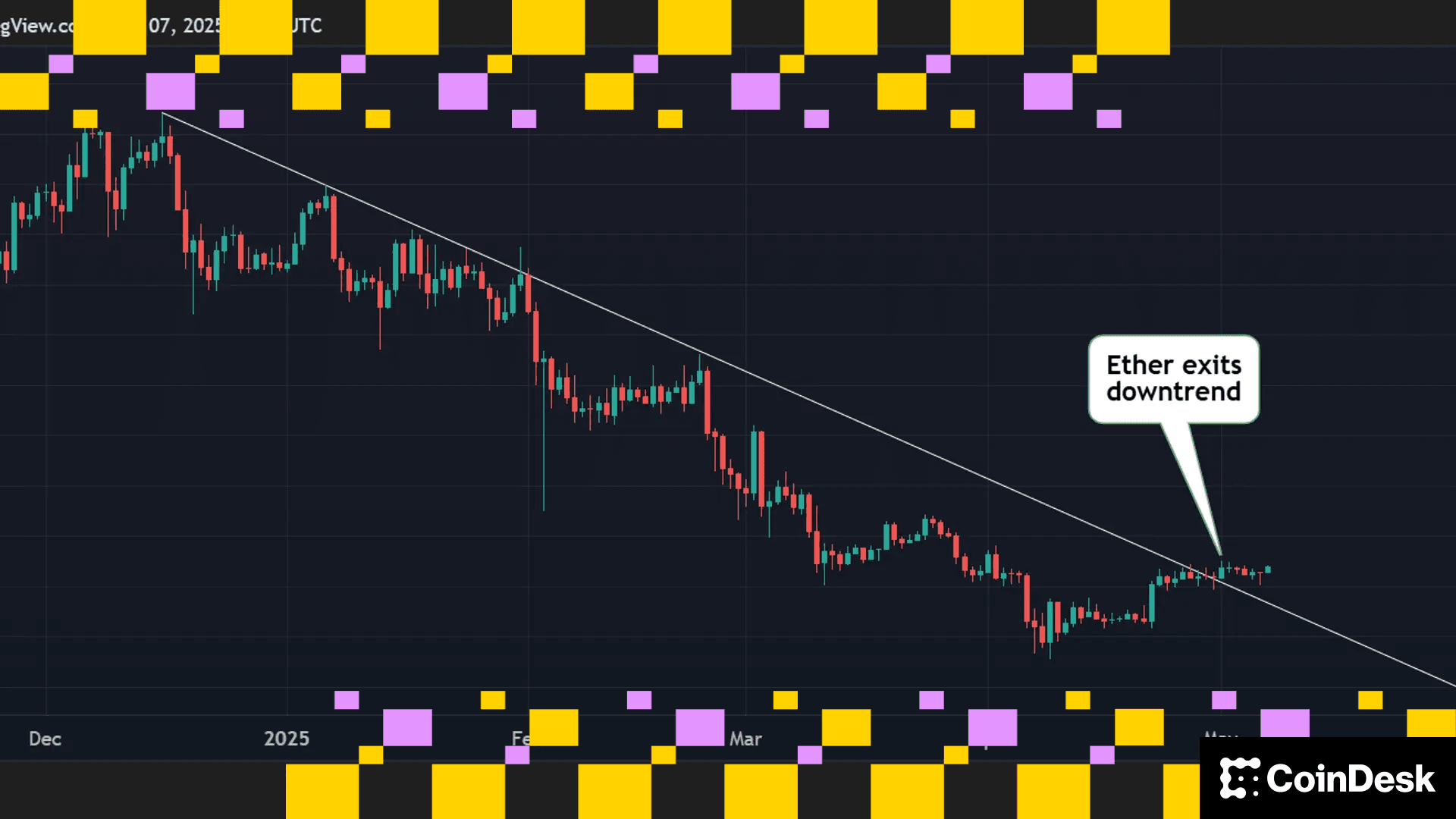Grayscale Adds Flexa’s AMP to DeFi Fund, Removes BNT, UMA in Quarterly Rebalancing
The world’s largest digital asset manager announced the updated weightings on Monday, following reconstitution of the CoinDesk DeFi Index (DFX).

Grayscale Investments, which runs the Grayscale DeFi Fund and Grayscale Digital Large Cap Fund, announced in a release on Monday updated fund component weightings for each product in connection with the funds’ quarterly reviews.
Rebalancing of the Grayscale DeFi Fund followed quarterly reconstitution of the CoinDesk DeFi Index (DFX), which the fund tracks.
- New York-based Grayscale is owned by Digital Currency Group, the parent company of CoinDesk.
- CoinDesk Indices launched the CoinDesk DeFi Index (DFX) in July. At the same time, Grayscale announced the Grayscale DeFi Fund. The DFX output is available live on tradeblock.com, the website of CoinDesk Indices’ wholly owned index calculation agent.
- Quarterly reconstitution of the DFX resulted in the removal of two cryptocurrencies and the addition of one. Universal market access (UMA) and bancor (BNT) were removed from the index, and Flexa’s amp (AMP) was added. The DFX is a market-cap-weighted basket of cryptocurrencies, representative of the DeFi (decentralized finance) category, as defined in the CoinDesk Indices Digital Asset Classification Standard.
- In accordance with the CoinDesk DeFi Index reconstitution, Grayscale adjusted the DeFi Fund’s portfolio by selling certain amounts of the existing fund components in proportion to their weightings and using the cash proceeds to purchase amp (AMP).
- As a result of the rebalancing, bancor (BNT) and universal market access (UMA) have been removed from the DeFi Fund.
- AMP is the native token of the Flexa network, a payment network that enables crypto-collateralized payments at physical stores and online.
- Flexa uses the AMP token to collateralize digital asset payments while they are confirmed on their blockchains and settles the payments in fiat to the recipient.
- By enabling payments through the Flexa network, supporting merchants can more easily and confidently accept payment in BTC, ETH and other digital assets. The Flexa network is one of a number of projects intended to accelerate the development of the blockchain into a mature peer-to-peer money system, according to Grayscale.
DeFi Fund’s components as of Monday:
At the end of the day on Monday, the DeFi Fund’s Fund Components were a basket of the following assets and weightings.
- Uniswap (UNI), 42.33%
- Aave (AAVE), 13.06%
- Curve (CRV), 10.63%
- MakerDAO (MKR), 8.99%
- Amp (AMP), 7.39%
- Yearn Finance (YFI), 6.34%
- Compound (COMP), 5.02%
- Synthetix (SNX), 3.15%
- SushiSwap (SUSHI), 3.09%
No new tokens were added or removed from Grayscale Digital Large Cap Fund. This announcement follows the October news that Grayscale adjusted the Digital Large Cap Fund’s portfolio and added solana (SOL) and uniswap (UNI).
At the end of the day on Monday, the Digital Large Cap Fund’s components were a basket of the following assets and weightings:
- Bitcoin (BTC), 60.50%
- Ethereum (ETH), 30.13%
- Solana (SOL), 3.56%
- Cardano (ADA), 3.05%
- Uniswap (UNI), 0.77%
- Chainlink (LINK), 0.71%
- Litecoin (LTC), 0.69%
- Bitcoin Cash (BCH), 0.59%
Neither the DeFi Fund nor the Digital Large Cap Fund generates any income, and both regularly distribute fund components to pay for expenses. Therefore, the amount of fund components represented by shares of each fund gradually decreases over time.
Note: This article was updated to clarify the relationship between the CoinDesk DeFi Index (DFX) and the Grayscale DeFi Fund.
More For You
Exchange Review - March 2025

CoinDesk Data's monthly Exchange Review captures the key developments within the cryptocurrency exchange market. The report includes analyses that relate to exchange volumes, crypto derivatives trading, market segmentation by fees, fiat trading, and more.
What to know:
Trading activity softened in March as market uncertainty grew amid escalating tariff tensions between the U.S. and global trading partners. Centralized exchanges recorded their lowest combined trading volume since October, declining 6.24% to $6.79tn. This marked the third consecutive monthly decline across both market segments, with spot trading volume falling 14.1% to $1.98tn and derivatives trading slipping 2.56% to $4.81tn.
- Trading Volumes Decline for Third Consecutive Month: Combined spot and derivatives trading volume on centralized exchanges fell by 6.24% to $6.79tn in March 2025, reaching the lowest level since October. Both spot and derivatives markets recorded their third consecutive monthly decline, falling 14.1% and 2.56% to $1.98tn and $4.81tn respectively.
- Institutional Crypto Trading Volume on CME Falls 23.5%: In March, total derivatives trading volume on the CME exchange fell by 23.5% to $175bn, the lowest monthly volume since October 2024. CME's market share among derivatives exchanges dropped from 4.63% to 3.64%, suggesting declining institutional interest amid current macroeconomic conditions.
- Bybit Spot Market Share Slides in March: Spot trading volume on Bybit fell by 52.1% to $81.1bn in March, coinciding with decreased trading activity following the hack of the exchange's cold wallets in February. Bybit's spot market share dropped from 7.35% to 4.10%, its lowest since July 2023.
Більше для вас











